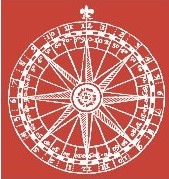‘Cui multum datum est...’ La confraternita dei Bianchi di Fosdinovo (Toscana, Italia) tra XV e XVII secolo
This article is a brief history and overview of the Confraternity of the Most Holy Annunciation (Compagnia della Santissima Annunziata) in Fosdinovo, a small town in the Lunigiana region in north-western Tuscany. From the fourteenth to the…
Listed in Article | publication by group Iter Community
Version 1.0 - published on 17 Oct 2025
Licensed under Creative Commons BY-NC 4.0
Description
This article is a brief history and overview of the Confraternity of the Most Holy Annunciation (Compagnia della Santissima Annunziata) in Fosdinovo, a small town in the Lunigiana region in north-western Tuscany. From the fourteenth to the eighteenth century the town’s history was closely connected with the Malaspina family. The principal source of information for the confraternity is its oldest book, an unpublished paper register datable to 1614. The confraternity itself was founded in 1468, just a few months before the Marquis Gabriele Malaspina assumed possession of the territory in the wake of an agreement that finally ended the conflicts between the heirs of Antonio Alberico Malaspina. From the moment of its foundation the confraternity had an oratory. In 1653 the oratory was rebuilt by Pasquale Malaspina as a rather sizeable building (25 m x 13 m). The church holds a valuable fifteenth-century wooden statue of the Madonna Annunciate, to whom, from the seventeenth century on, many miracles have been attributed. The confraternity’s first book is a rich fount of information for the physical aspects of the oratory that allows us to track the work carried out on it and to analyze the confraternity’s organizational structures. In light of this information, the confraternity seems to have been primarily interested in the organization of its members’ devotional life and in religious rituals. It did have, however, a small mutual assistance program that came into operation especially at the time of a member’s death and saw to the funeral services of the deceased and related rituals. The confraternity’s membership list indicates that in the seventeenth century, a time of great importance in the history of the confraternity, there was relatively little evolution in a dynastic sense and the highest positions in the organization went to members from a restricted number of families.
Cite this work
Researchers should cite this work as follows:
Tags
Notes
Original publication: Dadà, Massimo. “‘Cui multum datum est…’ La confraternita dei Bianchi di Fosdinovo (Toscana, Italia) tra XV e XVII secolo.” Confraternitas 17 (2): 2010. 28-39. DOI: . This material has been re-published in an unmodified form on the Canadian HSS Commons with the permission of Iter Canada / Confraternitas. Copyright © the author(s). Their work is distributed by Confraternitas under a Creative Commons Attribution-NonCommercial 4.0 International License. For details, see https://creativecommons.org/licenses/.
Publication preview
Iter Community
This publication belongs to the Iter Community group.
When watching a publication, you will be notified when a new version is released.
